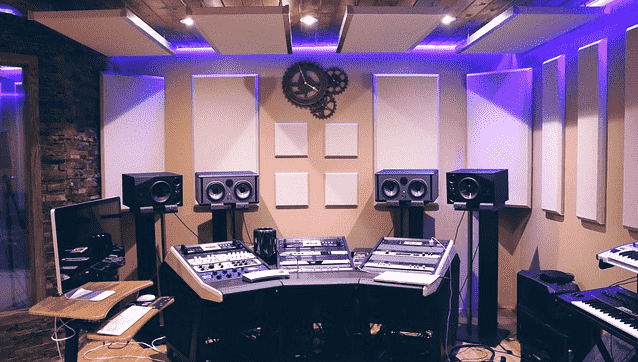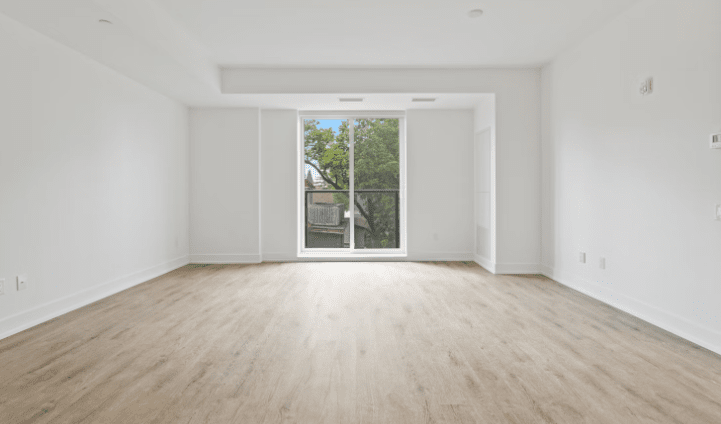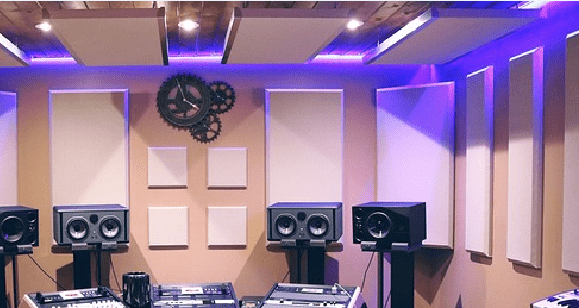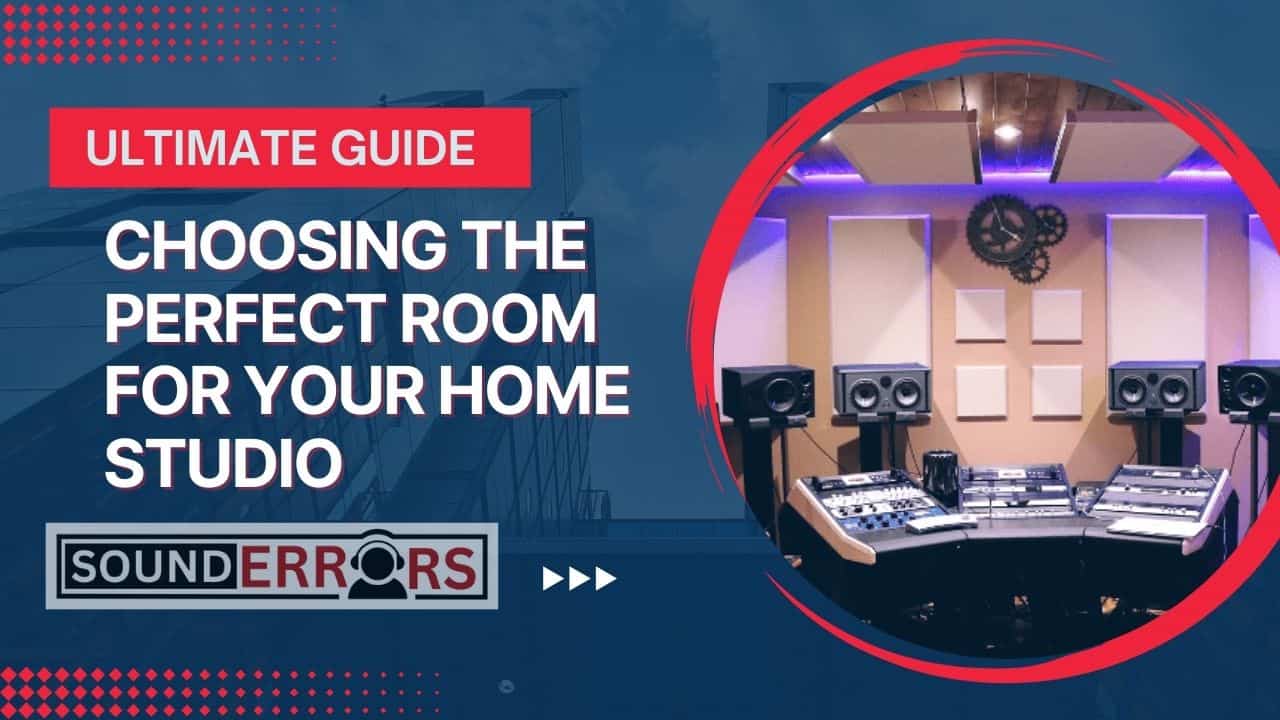This Post may contain affiliate links, when you purchase through links on our site, we may earn an affiliate commission at no extra cost to you. Here’s how it works.
Selecting the right room is crucial for achieving professional-quality recordings and mixes. Whether you’re recording vocals, instruments, or mixing tracks, the physical space where you work can significantly impact your results.
Table of Contents
ToggleIn short, a Rectangular shape, Soundproof, and Acoustic treated room is perfect for your home studio. But in detail, there are a few more key factors to consider when choosing a room for a home studio.
Choosing the Perfect Room for Your Home Studio
If you want to build a professional studio at home, make sure you have enough knowledge of it, otherwise, you may face many issues after setup. Many professional complains the sound quality is not as good as they require and they already spent thousands of dollars.

Hire a professional or follow the key things before choosing a room for your home studio:
Space, Layout & Ergonomics
The layout of your home studio will have a big impact on your comfort, workflow, and overall productivity.
- Ideal Room Shape: Rectangular rooms are best because they offer more predictable sound distribution and are easier to treat acoustically.

- Size of the Room: You’ll need enough space to move around comfortably. Space for your desk, monitors, instruments, and any additional gear, as well as room for acoustic treatments.
- Ergonomics: Ensure your desk and chair are adjustable, your monitors are at the correct height, and your instruments or control surfaces are easily accessible.
- Storage Space: Consider the amount of storage you’ll need for cables, instruments, and accessories. Clutter-free storage areas can make the workspace an organized and focused environment.
Quick Tip: If your room is small, use vertical space effectively by mounting shelves, racks, or hooks to keep your gear organized and off the floor.
Soundproofing & Noise Control
Soundproofing is one of the first things to consider when choosing a room for your home studio. How it can solve, check it:
- External Noise: External sources like traffic, neighbors, or street noise can bleed into your recordings. Ideally, choose a room located away from noisy streets. Rooms at the back of the house and away from windows tend to fare better.
- Internal Noise: Internal sources like HVAC systems, refrigerators, or washing machines can also create unwanted sounds. When selecting a room, consider whether these appliances can be turned off during recording sessions.

Quick Tip: Focus on finding a quiet room and minimizing noise within your control—strategic placement of heavy curtains, and rugs, and sealing gaps around windows or doors can help.
Room Acoustics
The acoustic properties of the room will dramatically affect the quality of your recordings and mixes. Here are a few key things you have to consider:
- Room Shape: A rectangular room is generally preferable for acoustics. In square or oddly shaped rooms, sound waves bounce off parallel surfaces and interact in problematic ways. A rectangular space allows you to be more easily managed with strategic placement of acoustic treatment.
- Ceiling Height & Size: High ceilings are generally better for acoustics. The larger larger rooms can also require more acoustic treatment.
- Surface Materials: Hard, reflective surfaces like glass, tile, or drywall can create longer decay times that negatively impact sound. Treat reflective surfaces with acoustic panels, bass traps, and diffusers. Avoid rooms with overly reflective surfaces unless you’re prepared to invest in treatment.
Quick Tip: If the room you choose is smaller or has hard surfaces, invest in broadband absorbers, bass traps, and diffusers to treat primary reflection points (walls, ceiling, and floor) to improve clarity and control.
Electrical Power & Safety
The electrical setup can make a significant difference to the performance and even the safety of your gear.
- Proper Grounding: Many older homes may not have proper grounding. This can lead to electrical interference or even damage to your gear. Ensure properly grounded outlets to avoid power-related issues.
- Overloaded Circuits: This setup demands a significant amount of power if you’re using high-end computer audio interfaces, or multiple devices simultaneously. Consider consulting an electrician if you’re unsure about the power capacity of your room.
Quick Tip: Use a surge protector or uninterruptible power supply (UPS) to protect your equipment.
Temperature, Humidity, & Equipment Safety
It’s essential to choose a room that can keep your gear in optimal conditions. Every electric component generates hits, a room with organic heat and humidity is not suggested.
- Temperature Control: Electronics generate heat, so a room with good ventilation or air conditioning is ideal.
- Humidity Control: Excess moisture can damage electronics over time, leading to corrosion or short circuits. Avoid spaces with high humidity, such as basements, or consider using a dehumidifier to maintain safe conditions.
Quick Tip: Avoid placing your gear directly on the floor. Use racks, stands, or cabinets to keep equipment off the ground.
Room Isolation & Privacy
If you’re recording vocals or sensitive instruments, privacy and room isolation are very important. You don’t want to be disturbed by someone in between recordings.
- Isolated from Shared Spaces: Choose a room that is not directly attached to busy areas of the house. If possible, choose a room that has its own entrance.
- Noise Isolation from Neighbors: A room on the top floor or away from shared walls may offer more privacy for recording.
Quick Tip: Adding door seals, heavy curtains, or rugs on floors can help mitigate noise transmission to and from your studio.
Conclusion:
Ensure your home studio offers a balance of quiet, good acoustics, adequate power, and enough space to support your equipment and workflow. While it’s important to address technical factors like noise isolation and room modes, don’t forget to consider your comfort and the overall usability of the space.
If you’re still confused about choosing the perfect room for your home studio, hire proffessional from this field. It may take hundreds of dollars but it’s a safe way to choose.
